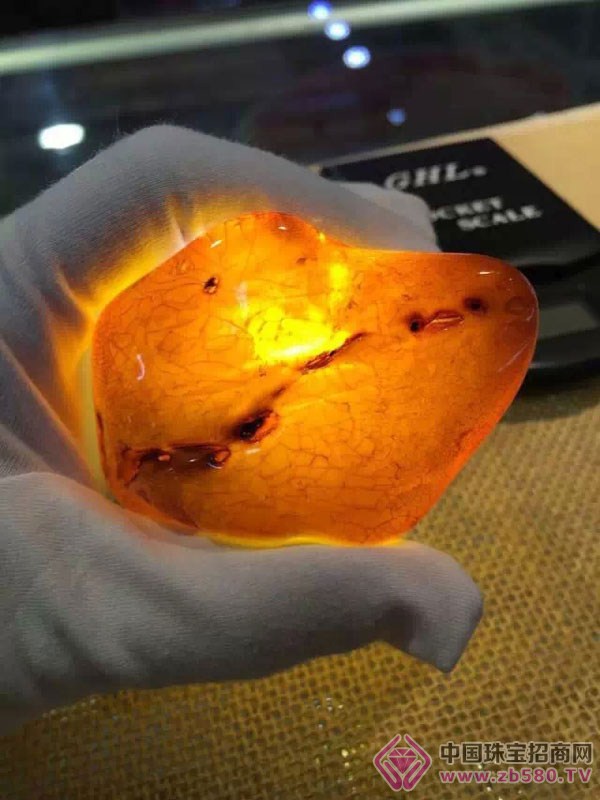Old amber is amber that has been formed for a long enough year. This amber is rare and extremely precious. It is also the object of chasing by collectors and players. The old amber is not common on the market, but it is not without it. Among them, there is no shortage of fake old amber. Therefore, encountering old amber must not be careless, to carefully observe the screening, then what is the identification method of old amber ?

1. Identification of weathered lines . Many people know that weathered lines are one of the characteristics of old amber, and some fake old amber will also fake such fine cracks. By careful identification, the difference between natural and counterfeit can be found. The naturally formed weathering pattern is evenly distributed, the transition is natural, it looks cracked, and it feels very smooth. The forged weathering lines are unevenly distributed and feel the convexity.
2, shape identification. Any old amber, its corners and contour edges will have signs of wear and tear, the lines will become soft and smooth, and the brightness will be more obvious in some prominent places. The weathered surface of the depression will not be smooth, and there will be deposits such as dirt. Counterfeit old amber does not have this feature, especially in depressions, and there is no weathering.
3. Fluorescence identification. The fluorescence reaction of natural old amber is like a weathered layer wrapped around it, which is faint. The fluorescence reaction in the depression is not obvious because the weathering texture is uneven or there is dirt accumulation. The part that is not weathered inside has a good fluorescence response. Counterfeit old amber is different, the fluorescence reaction has no change characteristics, and the fluorescence is evenly distributed in all parts.
Old beeswax is a kind of natural amber. It takes thousands of millions of years to form. The weathering lines on the surface can be roughly divided into: ice cracks, netting, and molecular-like polymeric lines.
1. Ice crack: There is a thick and thin open crack line pattern, similar to the large open glaze pattern unique to Songguan kiln.
2, netting: the netting is basically visible in the thickness, is composed of short and fine crack lines of ice cracks. The netting is fine and evenly connected, which is similar to the small open glazed surface of the Song Ge Kiln. Watching with a magnifying glass, its dense netting gives a sense of simplicity and elegance.
In fact, most of the weathered lines are roughly like nets, and those that are viewed in detail are grouped in single or multiple lines, and are not interwoven. The crack of the net is straight and not hard, but the song is not soft, and the tail of the line is seen with a fine front. It is like a collection of paintings and paintings, and it is very similar to the unique "çš„ mud pattern" of the kiln.
In addition, the high-magnification magnifying glass is used to observe the two sides of the crack line of the old bead, which is blunt and not sharp, and is a witness to the long-wearing natural wear. The color of the ridges is different in color. The formation time of the weathering cracks is different, and the environment is different. The contact with different substances gradually infiltrates into these cracks and builds up for a long time. Therefore, we use a high magnification magnifying glass to see a lot of old beeswax beads. The weathered netting has several different levels, and the thickness of the lines, the density, the shade of the color, and the weathered texture.
3, class molecular polymerization pattern: Many times, we are not visible in the old beeswax beads in all or part of the net, but there is a deeper weathered color to show its "old state" (common old beads at both ends). We looked at it with a high magnification magnifying glass under suitable illumination. It can be seen that the dark part is not dyed, but the surface weathering forms a very fine molecular-like polymer network. The old beeswax beads are often different in nature due to the shape of the beads, the way they wear them, and the nature of the wearers. They have long been left in the parts that are not easy to touch, leaving more traces of natural weathering.
The above is the Xiaobian's identification of the old amber that I want to introduce to my friends today. I will pay attention to the China Jewelry Merchants Network to learn more about Amber.
Cardboard Wine Box,Gift Packing Box,Corrugated Shipping Boxes,Wine Bottle Gift Packaging Box
Shenzhen Yi Ding Peng Packaging Design Co., Ltd. , https://www.szydppackaging.com
